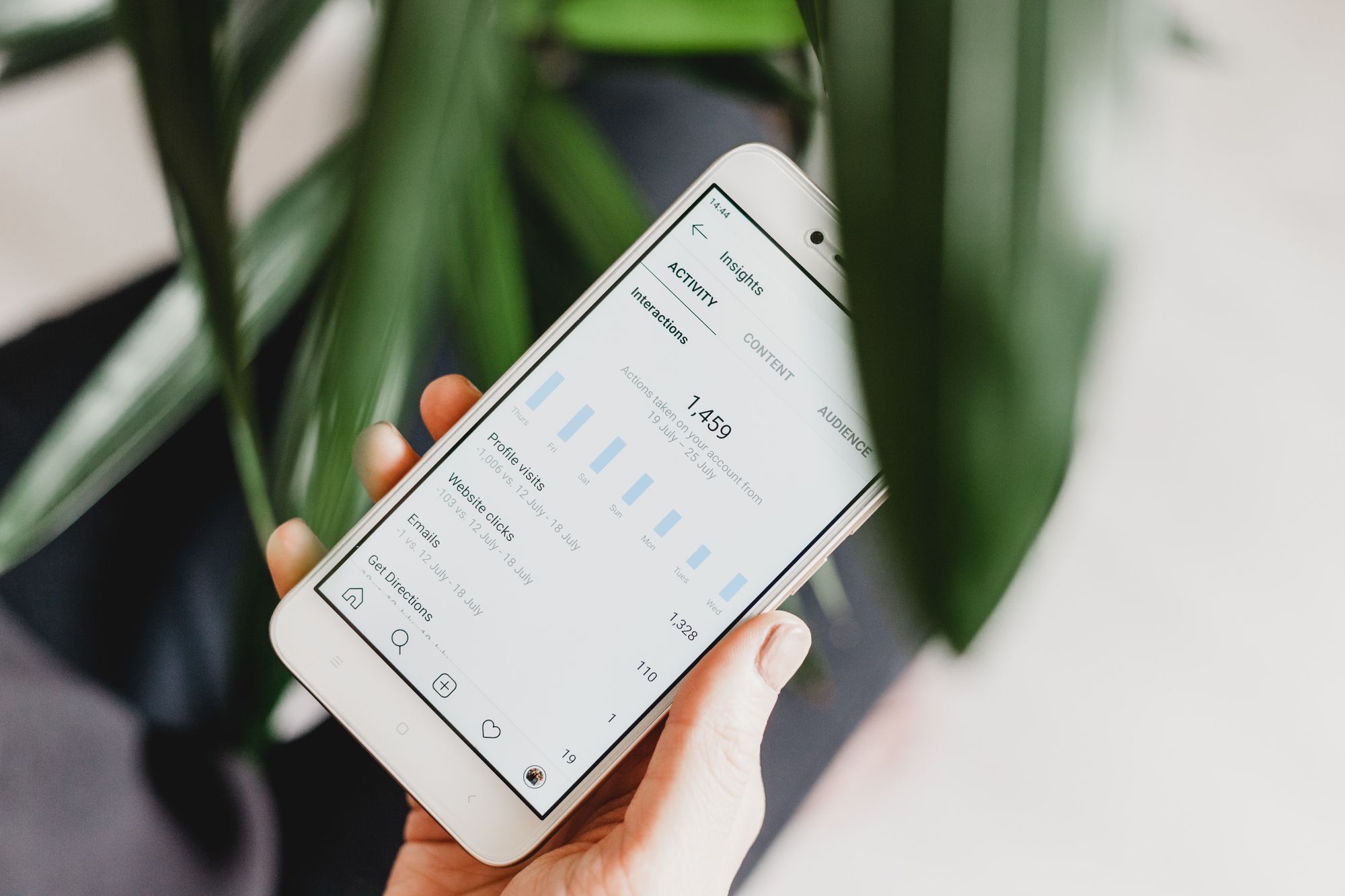How You Can Measure Your Campaign Success by Tracking Your Influencer Marketing ROI

The popularity of social media has opened new doors for its users. One such example is the rise of the ‘influencer’ – a person who can help market a product or service by promoting it to their online audience.
Wondering how someone can make money through influencer marketing? Well, individuals with large followings can reach hundreds of thousands, if not millions, of potential buyers at the press of a few buttons. Not only that, but it can also help bolster a brand’s image by associating it with popular celebrities and public figures.
For these reasons, influencer marketing is an attractive option for social media-savvy brands. That means influencers may earn thousands per advertized post. In fact, the industry is projected to be worth approximately $16.4 billion in 2022.
For all its benefits, the industry still receives a healthy amount of criticism. Many businesses are now asking the question: is influencer marketing worth the money?
This article will take a deep dive into influencer marketing, aiming to answer that question of whether it is worth it for your brand. In particular, we’ll be looking at how to track your influencer marketing ROI.
A brief history of influencer marketing
The trend of ‘influencing’ dates back far beyond the Internet. For example, one may argue the British monarch’s “Royal Warrant of Appointment” is a form of influencer marketing dating back to the 15th century.
This system allows the highly influential royal family to advertize which products and services they use, thus lending prestige to the appointed brand. You should not underestimate just how important that association is for some brands. It is estimated that some earn up to 5% of their annual revenue as a result of receiving a royal warrant.
These days, influencer marketing tends to take the form of posts on social media platforms. Posting pics to Instagram is a dream job for many, and luckily you don’t have to be a King or Queen to participate! The ‘free market of ideas’ has created a highly competitive influencer scene, making it a full-time job for the most popular individuals.
It is also worth noting the effect of covid restrictions on influencer marketing. Given that much of the world’s population was under lockdown at some point in the past few years, people have been spending more time online. Suddenly, adverts on the train to work had a far narrower reach than before. Rather, brands turned to popular individuals to market products on social platforms.
As such, the trend of influencer marketing should be considered alongside other modern techs that look to create a ‘metaverse’. The idea is that workplaces are moving towards online spaces where people may collaborate regardless of geographic limitations. For example, computer telephony integration (CTI) is already moving phone calls to the digital realm.
How does influencer marketing work?
Influencers operate on platforms with wide reach, such as Twitter, Instagram, or TikTok. Typically, they will make a post reviewing or recommending an item to which they have some publicized level of knowledge.
For example, models and fashion designers are seen by many as experts on beauty products. So, if you saw a model recommend a certain skincare product, you would feel inclined to trust their advice.
Now consider that these posts are shown to social media users in their feeds, alongside posts from friends and family. This is where the effectiveness of influencer marketing lies: in that it does not appear as an advert at first glance.
A social media user simply views an influencer’s advert as a regular post just like any other. Thus, that brand is subtly associated with their leisure time, their favorite celebrities, friends, and family. You can think of this association as working in the same way product placements do in TV. Sure, it is about reaching a wide audience, but the real value lies in the subtlety of the sales approach.
What is influencer marketing ROI?
You may be reading this post and wondering: how on Earth can brands work out a return on investment (ROI) of an influencer post?
Indeed, many marketing strategists would argue that influencer marketing is not something that can be quantified in terms of ROI. Unlike marketing tactics such as pay per click (PPC) or cost per action (CPA), it is difficult to estimate the true conversion rate of influencers.
This difficulty meets opposition from a brand’s financing department. They may ask their marketing officer to prove that influencing really is a viable method of advertising.
As such, this next section will break down the various ways that brands can calculate ROI on influencer marketing posts.
4 steps for calculating influencer marketing ROI
The basic way for calculating return on investment is to work out the total cost and total returns of a campaign. Unfortunately, finding these figures is not a clear-cut process. That’s why we find it useful to break down the ROI calculation into four steps:
Set your goals
The first step for all marketers is to set clear goals. For any campaign to be successful, there should be a strong purpose behind its introduction. Running adverts without direction is like throwing everything at the wall to see what sticks. It’s costly, ineffective, and impossible to define what metrics are ‘valuable’ to your brand.
To define a clear strategy, you need all senior members of your brand to be in consensus. Then, you can refer back to the plan in future when evaluating the success of the campaign. Working in a hybrid team? You may find that conference calling services are useful for keeping everyone connected.
So, you need a goal, but what should you be aiming for? To answer this question you need to consider what your brand needs. Common goals include:
- Brand visibility – Do you want your products to be seen by a wider audience? Or perhaps you want them to have more positive associations?
- Social media engagement – Are your social pages lacking? Maybe you see influencer marketing as a way to boost comments, likes, and shares on your official accounts.
- Content creation – Is your website bland and dull? Pictures of your products alongside a celebrity endorsement are a nice way to bulk the content of your site and social pages.
- Increased revenue – A simple reason might be that you are looking for higher sales.
Record the total costs
So, you have set a clear vision for your influencer marketing campaign. The next step is to work out the total costs of running it. Whilst this may seem like a simple step, there are a few factors to consider:
- Influencer rates: This totally depends on the size of the account run by an influencer. Whilst small accounts may charge a few hundred per post, influencers like Cristiano Ronaldo may earn up to $1.6 million per post.
- Product samples: Standard practice in the influencer marketing industry is to offer the products or services free of charge to the reviewer. This might not be much, but it can add up across the board.
- Time: Planning a marketing strategy, contacting the relevant agents, and transacting/posting the item all takes time. If you’re hiring a marketer to do this for you, consider how much their salary costs your business.
Define your ‘return’ metrics
Calculating the returns of your influencer marketing campaign is the most challenging part of the process. How you go about this will largely depend on the goal you set at the start. The most important factors to consider are:
- Impressions: Simply, how many views has your brand influencer gathered on their post? Thankfully, these metrics are easy to find on most social media platforms.
- Engagement: If an impression is a ‘view’, an engagement is an ‘action’. You can measure this in terms of comments, shares, likes, or new subscribers. Alternatively, you may look at which sources are directing traffic to your website.
- Direct sales: Perhaps the most obvious way to measure campaign effectiveness is to look at income through sales. You may want to look at total sales, or home in on sales converted via the specific link/product in an influencer’s post.
Once you have gathered your return metrics you will want to compile them in a central location. From there, you can use the unified data to visualize trends and statistics. Many software engineers use an extract transform and load process to compile datasets from multiple sources in one destination.
Work out ROI
Now you have calculated total costs vs total returns, you only need to do some simple math to work out your return on investment. The process for doing so is highlighted in the image below.
Get started on influencer marketing
To conclude, influencer marketing is an attractive tool for brands that has exploded in popularity in recent years. Whilst influencing has existed for centuries, it continues to pose marketers with challenges.
One such hurdle is the process of working out your return on investment. You should note that this article has only covered some common return metrics and is by no means exhaustive. Marketers will often consider a wide variety of factors in deciding whether to enter a partnership with an influencer.
For example, you may want to think about the longevity of the content produced by an influencer. A one-off post might not make a lasting impression on audiences. As such, many brands now seek bespoke partnerships that drive recurring social media posts.
Whatever approach you decide to go for, you should aim to follow the basic 4 step guide outlined above to work out your return on investment. Strategy -> costs -> revenue -> calculation. Good luck!
Bio:
Grace Lau - Director of Growth Content, Dialpad
Grace Lau is the Director of Growth Content at Dialpad, an AI-powered cloud call centers for small business platforms for better and easier team collaboration. She has over 10 years of experience in content writing and strategy. Currently, she is responsible for leading branded and editorial content strategies, partnering with SEO and Ops teams to build and nurture content. Here is her LinkedIn.
